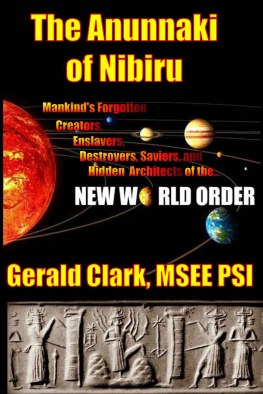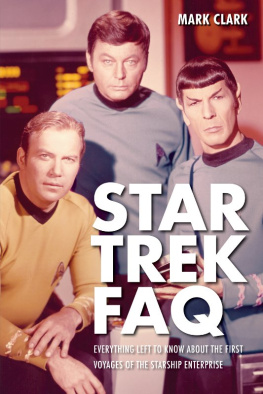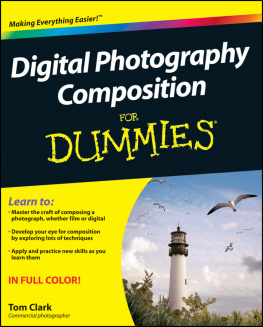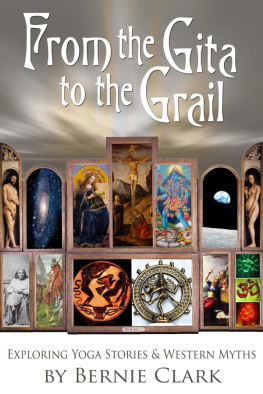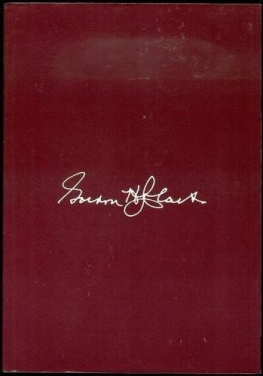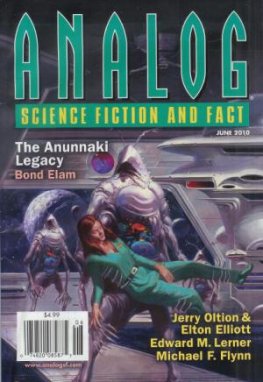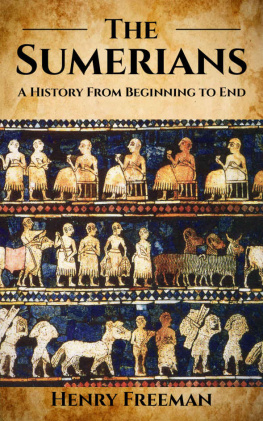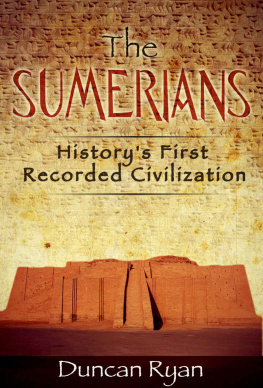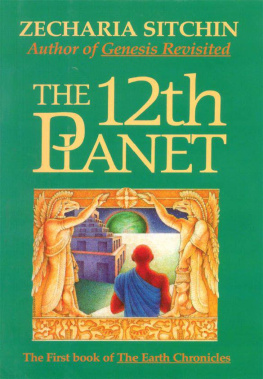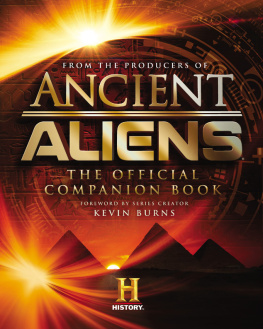Inspiration to delve into the Sumerian history first arose while doing business in Turkey. Discovering cities that pre-dated the Egyptian pyramids, like atalhyk, mentioned in Jared Diamonds Pulitzer Prize winning book Guns, Germs, and Steel [3], led my personal research to the earliest known writings of a civilized people, the Sumerians. Hebrew scholar and best-selling author Zecharia Sitchin, not only decoded the Sumerian cuneiform script, but did so with extensive references that satisfied even the most scrupulous Western modern academic and scientific mind. Great truths are being revealed to mankind thanks in great part to the research and published works of Zecharia Sitchin.
CHAPTER 1: Preface
Technical capabilities to include: building, transportation, and astronomy attributed to bygone civilizations are still a source of wonder for Westerners today. Innumerable television specials on the archeological findings relating to the Egyptian pyramids, the Mayan calendar, and discoveries of books and records from around the world uncovered in various forms, to include Sumerian Cuneiform tablets, provides modern man with a new understanding of ancient history. This lost knowledge has been slow to make its way into mainstream thought and is just now beginning to air on television on the History and Discovery Channels. It took time for archeologists to find the right artifacts to decode the past languages from the region.
Many historical and scriptural findings that were not included in or misrepresented by the Canonical Bible have now come to light. Access to scripts such as the Book of Enoch, the Nag Hamadi Gospels, the Book of Jubilees, among other historical texts, when synthesized and correlated with existing documents, is truly an eye opener relative to the common beliefs found in the modern Western culture.
Ancient Writings other than the books of the Canonical Bible broaden our knowledge base relative to history in the Middle East. Hidden scrolls tucked away in remote caves, cuneiform tablets covered by the sands of time, and equinox and solstice temples aligned perfectly to the sun lay forgotten in the deserted plains of Mesopotamia. Many of the documents predate the Canonical Bible by thousands of years, shedding light on the origins and influences of the familiar stories told therein having an immense influence on Western thought.
Would it surprise the reader to know that the flood hero Noah was actually a Sumerian King in the city of Shuruppak? He was quite well educated and wrote an account of his own regarding the times in which he lived. In the epic of Gilgamesh, one of the longest known stories involving the King of the Sumerian city of Uruk, the King visits Noah and has a long conversation with him about some issues common to both of them. Also from Sumer, that is the Southern extreme of Mesopotamiathe land between the two rivers: the Tigris and Euphrates, hails the Biblical Patriarch Abraham. Abram became Abraham once the covenant is made between him and the Lord, prior to that he was called Abram. Recall in Genesis 12:1-4 where The Lord said to Abram,
Genesis 12:1-4 (NIV)
Leave your country, your people and your fathers household
and go to the land I will show you.
I will make you into a great nation and I will bless you.
I will make your name great, and you will be a blessing.
I will bless those that bless you and whoever curses you I will curse;
and all peoples on earth will be blessed through you.
Abram was in the Sumerian city of Haran when he received the call from the Lord to go to the land of Canaan. Note that Abram was born in the Sumerian city of Ur approximately 1433 BCE. His father, Terah, was an artisan and priest in the local temple, and his brothers Nahor and Haran resided in Ur as well [40]. We find Abraham in the city of Haran when he is preparing to leave for Canaan as stated in Genesis 15:7.
Genesis 15:7 (NIV)
I am the Lord, who brought you out of Ur of the Chaldeans
to give you this land to take possession of it.
Wasnt the God of Abraham, Isaac, and Jacob the God of the Israelites, the God of the Old Testament? Thus, in addition to names like Jehovah, Yahweh, and El Sheddai, Abrahams God had another name in Sumer, one which he was called in one of his Temples in the city of Ur.
According to Cuneiform tablets found in Ur and many other pre and post-dilluvial cities along the Tigris and Euphrates to include Sippar and Nineveh, this Sumerian deity also had brothers and sisters who were also worshipped as gods in Mesopotamia and the surrounding regions. Abrahams deitys name is mentioned in other noteworthy documents from the region and era to include the Atrahasis, the Enuma Elish, and the Epic of Gilgamesh. Abraham and Noah also have close contact with these deities. Who were they and how do we know they existed? What are we to think about the fact that Abrahams God had a previous history as a Sumerian deity with a temple dedicated to him in Ur of the Chaldeans?
The funding for early archeological inquiries was closely controlled and channeled by early church authorities, in particular the Roman Catholic Church. A mandate was issued to only fund the archeological explorations that perpetuated the story told in the canonical Bible, established by the same institution at the Council of Nicaea, 325 AD. Eventually, hidden books and suppressed artifacts, codices, cylinder seals, and Sumerian cuneiform inscribed monuments and tablets gave up their secrets to the inquisitive minds of disenfranchised seekers of truth.
A heroic gentleman comes to mind, discovered during the research into this book, a Sir Henry Rawlinson , responsible for recording and decoding three languages he discovered in 1835 located 1700 feet above the desert floor chiseled into the cliffs of Behistun, in modern day Iran. The historical marker was commissioned by Darius the 1 st who lived and reigned from 522-486 BCE, recounting the Persian rulers suppression of various rival uprisings. In 1835, Sir Henry Rawlinson, a British army officer training the army of the Shah of Iran, began studying the inscription in earnest. As the town of Bisistun's name was anglicized as "Behistun" at this time, the monument became known as the "Behistun Inscription". Despite its inaccessibility, Rawlinson was able to scale the cliff and copy the Old Persian inscription. The Elamite was across a chasm, and the Babylonian four metres above; both were beyond easy reach and were left for later.
Armed with the Persian text, and with about a third of the syllabary made available to him by the work of Grotefend, Rawlinson set to work on deciphering the text. Fortunately, the first section of this text contained a list of Persian kings identical to that found in Herodotus, and by matching the names and the characters, Rawlinson was able to crack the form of cuneiform used for Old Persian by 1838 and present his results to the Royal Asiatic Society in London and the Societe Asiatique in Paris [120].

